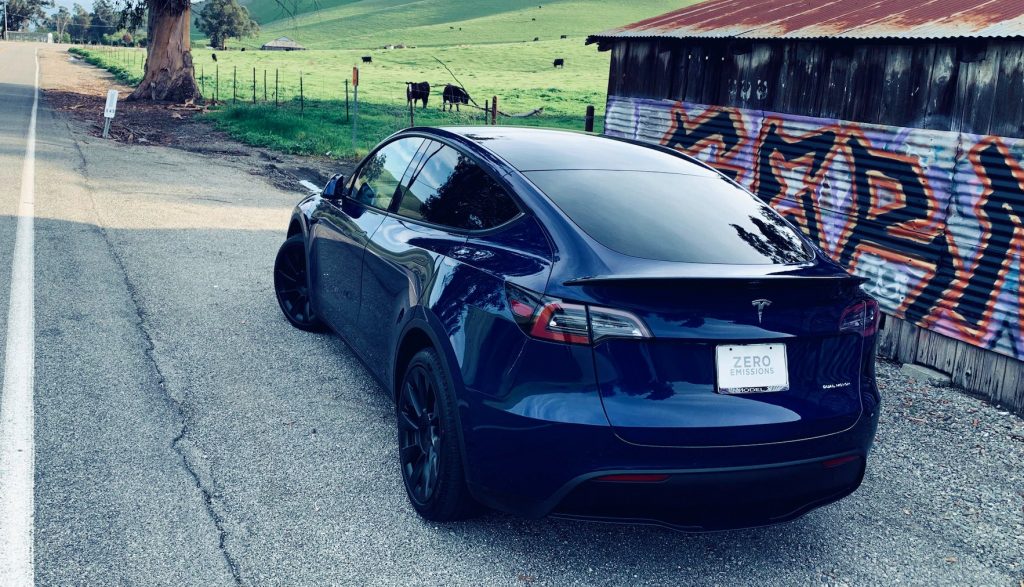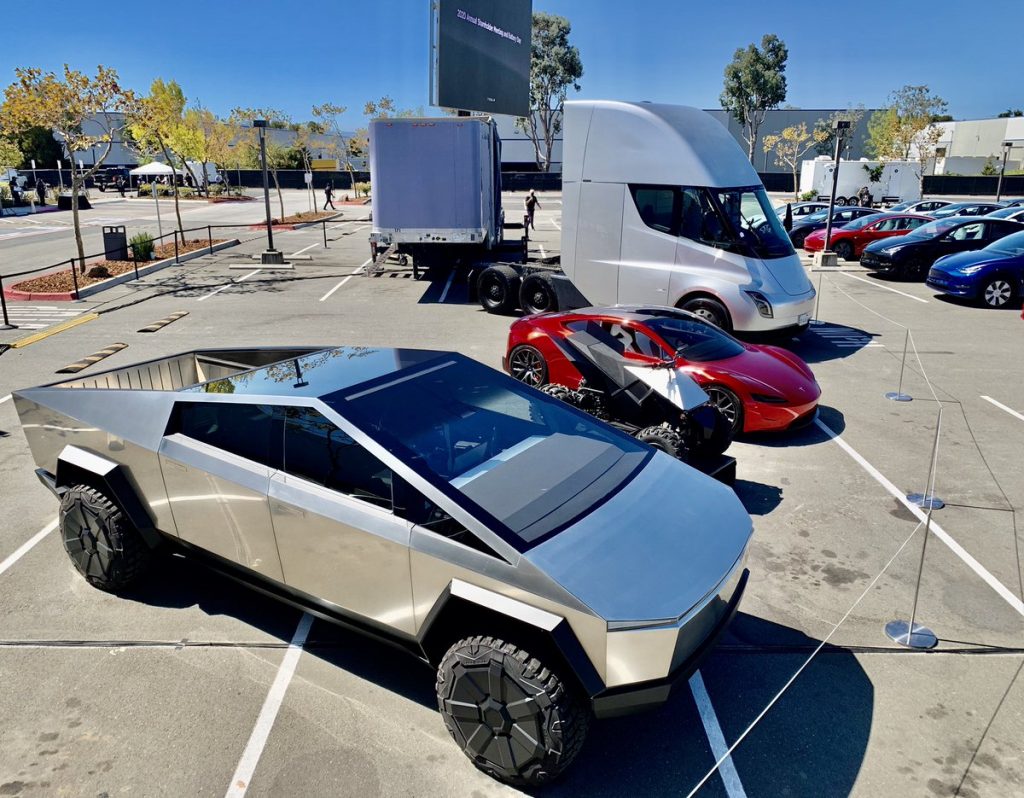

News
Tesla’s goal of producing 1 million cars per year is closer than everyone thinks
In classic Tesla fashion, Elon Musk shared an almost insane goal back in 2016. While speaking with analysts in a conference call, Musk remarked that he believes Tesla has a shot at achieving a production rate of 1 million cars a year. This statement was met with much criticism, considering that just the year prior, Tesla delivered just over 50,500 vehicles.
As the US auto industry is starting what could very well be a long road to recovery from a pandemic, it is starting to become evident that Musk’s goal may end up being feasible after all.
The year has been cruel to the automotive industry. Back in April, North American car factories that are known to produce about a million vehicles a month ended up producing fewer than 5,000 units. But while the year has been painful for the car industry, some recovery started becoming evident in recent months. Just last month, some large automakers reported sales that beat their 2019 numbers, hinting that an upswing may be on the way.
Amidst this trend is the one outlier in the US auto industry: Tesla. The electric car maker has felt the full brunt of the pandemic, as shown in the extended closure of its Fremont Factory from mid-March to mid-May. Despite this, the company was able to show a profitable second quarter, and this past Q3, it delivered a record 139,300 vehicles, up 50% from Q2 2020. The company also produced 145,036 cars in the third quarter, up 76% from the second quarter.

What is rather remarkable is that Tesla has decided to stand by its initial goal of delivering half a million cars this 2020. This target was already ambitious without the pandemic. With the pandemic, the company’s refusal to adjust its delivery targets seems downright insane. Yet if the company’s Q3 and potential Q4 results are any indication, Tesla may actually be closer to its 1-million-car-per-year goal than expected.
Tesla has delivered about 318,000 vehicles so far this year. For Tesla to meet its goal of delivering 500,000 vehicles in 2020, the company would have to deliver over 180,000 cars in the fourth quarter. This is yet another record for the company, and it is one that would likely be challenging. RBC Capital Markets analyst Joseph Spak, in a statement to The New York Times, noted that while 500,000 cars is “not an unattainable goal,” achieving it now “seems increasingly difficult.”
Yet despite these challenges, the fact that Tesla seems to be in striking distance of its pre-pandemic 2020 delivery goal represents an incredibly notable shift for the company. Just a little over a year ago, after all, Tesla was a much different automaker. It was still an embattled EV company, seemingly scrambling to raise money while TSLA short-sellers circled like sharks smelling blood in the water. Tesla ultimately proved its critics wrong, posting four profitable quarters as of Q2 2020.
If Tesla could come close or achieve its goal of producing and delivering over 180,000 vehicles in Q4 2020, the company would only be 70,000 cars short of a 250,000-vehicle-per-quarter run-rate. Once that is achieved, hitting 1 million cars per year in both production and deliveries will only be a matter of time. Granted, this is a rather ambitious step, but one must note that Tesla is pretty much taking on 2020 with just one and a half factories.

Today, Tesla only produces cars in two sites: the Fremont Factory and Gigafactory Shanghai. And even then, Giga Shanghai is not yet fully ramped, with the facility yet to start Model Y production and the Model 3 line has only started operating with 3 shifts. This means that this year, Tesla has pursued its ambitious goals with a main factory in the US that was closed for over a month and a Chinese plant whose Phase 1 is now just hitting its stride.
These circumstances will likely change by next year. Tesla is in the process of building two new vehicle production facilities: Gigafactory Berlin and Gigafactory Texas. Both facilities are designed to produce high-volume vehicles, with the German plant manufacturing the Model Y and Texas building the Cybertruck, a vehicle that has received well over half a million orders, as per remarks from CEO Elon Musk.
Of course, Tesla’s production and deliveries still only comprise a small part of the auto market. Yet despite this, the company’s rapid rise and the equally quick emergence of the electric vehicle sector means that Tesla is poised to dominate an industry that is still forming. Michelle Krebs, an executive editor at Cox Automotive, a market research firm, said it best in a statement to the NYT.
“Tesla is the EV market right now. It’s still a tiny part of the market, and they are going to face more competition, but they are now well established,” she said.

Elon Musk
SpaceX issues statement on Starship V3 Booster 18 anomaly
The incident unfolded during gas-system pressure testing at the company’s Massey facility in Starbase, Texas.

SpaceX has issued an initial statement about Starship Booster 18’s anomaly early Friday. The incident unfolded during gas-system pressure testing at the company’s Massey facility in Starbase, Texas.
SpaceX’s initial comment
As per SpaceX in a post on its official account on social media platform X, Booster 18 was undergoing gas system pressure tests when the anomaly happened. Despite the nature of the incident, the company emphasized that no propellant was loaded, no engines were installed, and personnel were kept at a safe distance from the booster, resulting in zero injuries.
“Booster 18 suffered an anomaly during gas system pressure testing that we were conducting in advance of structural proof testing. No propellant was on the vehicle, and engines were not yet installed. The teams need time to investigate before we are confident of the cause. No one was injured as we maintain a safe distance for personnel during this type of testing. The site remains clear and we are working plans to safely reenter the site,” SpaceX wrote in its post on X.
Incident and aftermath
Livestream footage from LabPadre showed Booster 18’s lower half crumpling around the liquid oxygen tank area at approximately 4:04 a.m. CT. Subsequent images posted by on-site observers revealed extensive deformation across the booster’s lower structure. Needless to say, spaceflight observers have noted that Booster 18 would likely be a complete loss due to its anomaly.
Booster 18 had rolled out only a day earlier and was one of the first vehicles in the Starship V3 program. The V3 series incorporates structural reinforcements and reliability upgrades intended to prepare Starship for rapid-reuse testing and eventual tower-catch operations. Elon Musk has been optimistic about Starship V3, previously noting on X that the spacecraft might be able to complete initial missions to Mars.
Investor's Corner
Tesla analyst maintains $500 PT, says FSD drives better than humans now
The team also met with Tesla leaders for more than an hour to discuss autonomy, chip development, and upcoming deployment plans.

Tesla (NASDAQ:TSLA) received fresh support from Piper Sandler this week after analysts toured the Fremont Factory and tested the company’s latest Full Self-Driving software. The firm reaffirmed its $500 price target, stating that FSD V14 delivered a notably smooth robotaxi demonstration and may already perform at levels comparable to, if not better than, average human drivers.
The team also met with Tesla leaders for more than an hour to discuss autonomy, chip development, and upcoming deployment plans.
Analysts highlight autonomy progress
During more than 75 minutes of focused discussions, analysts reportedly focused on FSD v14’s updates. Piper Sandler’s team pointed to meaningful strides in perception, object handling, and overall ride smoothness during the robotaxi demo.
The visit also included discussions on updates to Tesla’s in-house chip initiatives, its Optimus program, and the growth of the company’s battery storage business. Analysts noted that Tesla continues refining cost structures and capital expenditure expectations, which are key elements in future margin recovery, as noted in a Yahoo Finance report.
Analyst Alexander Potter noted that “we think FSD is a truly impressive product that is (probably) already better at driving than the average American.” This conclusion was strengthened by what he described as a “flawless robotaxi ride to the hotel.”
Street targets diverge on TSLA
While Piper Sandler stands by its $500 target, it is not the highest estimate on the Street. Wedbush, for one, has a $600 per share price target for TSLA stock.
Other institutions have also weighed in on TSLA stock as of late. HSBC reiterated a Reduce rating with a $131 target, citing a gap between earnings fundamentals and the company’s market value. By contrast, TD Cowen maintained a Buy rating and a $509 target, pointing to strong autonomous driving demonstrations in Austin and the pace of software-driven improvements.
Stifel analysts also lifted their price target for Tesla to $508 per share over the company’s ongoing robotaxi and FSD programs.
Elon Musk
SpaceX Starship Version 3 booster crumples in early testing
Photos of the incident’s aftermath suggest that Booster 18 will likely be retired.

SpaceX’s new Starship first-stage booster, Booster 18, suffered major damage early Friday during its first round of testing in Starbase, Texas, just one day after rolling out of the factory.
Based on videos of the incident, the lower section of the rocket booster appeared to crumple during a pressurization test. Photos of the incident’s aftermath suggest that Booster 18 will likely be retired.
Booster test failure
SpaceX began structural and propellant-system verification tests on Booster 18 Thursday night at the Massey’s Test Site, only a few miles from Starbase’s production facilities, as noted in an Ars Technica report. At 4:04 a.m. CT on Friday, a livestream from LabPadre Space captured the booster’s lower half experiencing a sudden destructive event around its liquid oxygen tank section. Post-incident images, shared on X by @StarshipGazer, showed notable deformation in the booster’s lower structure.
Neither SpaceX nor Elon Musk had commented as of Friday morning, but the vehicle’s condition suggests it is likely a complete loss. This is quite unfortunate, as Booster 18 is already part of the Starship V3 program, which includes design fixes and upgrades intended to improve reliability. While SpaceX maintains a rather rapid Starship production line in Starbase, Booster 18 was generally expected to validate the improvements implemented in the V3 program.
Tight deadlines
SpaceX needs Starship boosters and upper stages to begin demonstrating rapid reuse, tower catches, and early operational Starlink missions over the next two years. More critically, NASA’s Artemis program depends on an on-orbit refueling test in the second half of 2026, a requirement for the vehicle’s expected crewed lunar landing around 2028.
While SpaceX is known for diagnosing failures quickly and returning to testing at unmatched speed, losing the newest-generation booster at the very start of its campaign highlights the immense challenge involved in scaling Starship into a reliable, high-cadence launch system. SpaceX, however, is known for getting things done quickly, so it would not be a surprise if the company manages to figure out what happened to Booster 18 in the near future.








